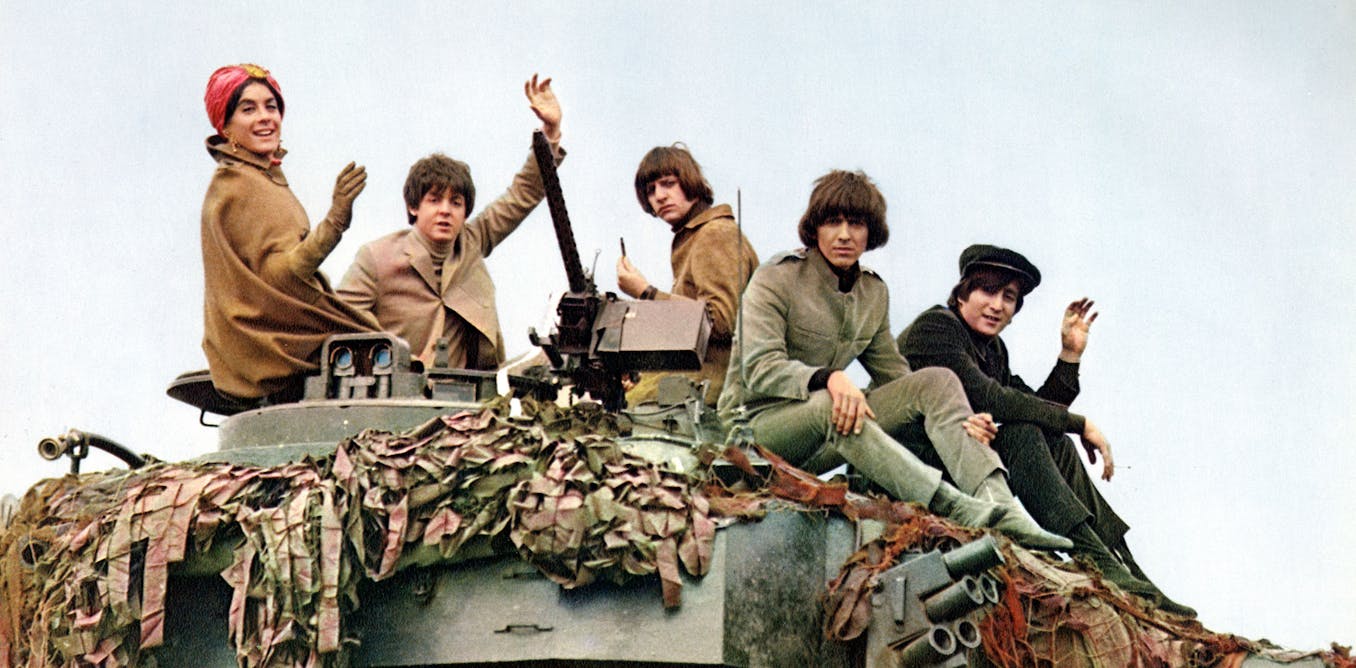The John Lewis Christmas advert has become as much a part of the festive season as tinsel and crackers. These adverts function as short films that don’t just sell products, they sell feelings. They work not through product placement but through sentiment, nostalgia and connection.
This year’s advert, which centres on a teenage boy buying his father a vinyl record, strikes a particularly resonant chord. The story invites us to think not only about family and festivity, but about how music and the technologies that carry it, allow us to travel in time and revisit the past, and to understand who we are.
At York St John University, our Music, Memory and Narrative Research Group has spent the past decade exploring exactly these questions. In Music, Memory and Memoir and Venue Stories, we gathered people’s stories of musical experience, not simply as nostalgic recollection, but as acts of constructing identity.
Through these projects, we discovered that when people tell stories about music, they are also telling stories about themselves: where they were and who they were and what this means for their older selves. These stories reveal how deeply music is woven into our sense of self and place. Music becomes, in effect, an emotional map of a person’s life.
Our current project, the forthcoming Turntable Stories, extends this exploration by focusing on the specific technologies of record players and vinyl. For those who grew up in the 1970s, 1980s and 1990s, the turntable was more than a playback device.
The act of placing the needle on the record, of flipping the disc and studying the sleeve notes, shaped how we experienced music as both sound and an object. In collecting these stories, one of the most poignant themes to emerge has been intergenerational connection. Vinyl records link parents and children, not only through shared listening but through the stories and memories embedded in the grooves.
Back in time
This theme sits at the very heart of this year’s John Lewis advert. The boy’s decision to buy his father a vinyl record is about more than a gift – it’s about recognition. The moment the record begins to play, his father is transported back to his younger self, moving to the rhythm of a 1990s dance banger.
The music collapses time. The father’s younger self flickers momentarily in the present, and in that moment the son glimpses his parent anew: as a person with a past, the music a soundtrack of his father’s youth. The advert gives us, in miniature, a father-and-son biography told through music, fusing memory, identity and affection.
Our research helps to explain why such a story resonates so powerfully. Music psychologists and cultural theorists alike have suggested that songs act as “time machines” of emotion. They allow us to revisit versions of ourselves long after the circumstances of those memories have faded.
In the process, listening becomes a form of autobiography. As our Turntable Stories contributors tell us, the act of hearing an old record often feels like a dialogue across time. In one chapter, author Amy McCarthy beautifully reverses the dynamic of the John Lewis advert. Rather than a son giving to a father, Amy’s father gives her a box of his old vinyl records from the 1980s, including the Smiths.
Thinking about how my dad experienced listening to The Queen is Dead at 24, I realise I know very little about my parents’ lives before they had children. I wonder what my dad thought the first time he brought this record home.
During the pandemic, she listens to these records as a 24-year-old, the imaginative act of listening across time becoming a way of understanding him and herself. The records offer a shared space of reflection where two 24-year-olds, separated by nearly four decades, coexist for the duration of a song.
Other contributors in Turntable Stories describe similar experiences of time folding, where the sound of an old record creates a bridge between past and present. To play a record is to perform memory. It reactivates not only what was heard but where, when, and with whom it was first experienced.
Author Prasad Bidaye’s chapter expands this discussion, exploring how records circulate within diasporic communities. As part of a second-generation Indian family in Canada, Bidaye describes how vinyl became a means of continuity, carrying fragments of cultural identity from one continent to another, discovering “the ways music creates community, especially for families like mine who never fully fitted into the North American mainstream, nor the one of our ever-growing Desi diaspora”.
The power of vinyl
These accounts remind us that vinyl is more than nostalgia. Its material qualities shape how memory works; it is the weight of the record, the sleeve art, the beer stain on the inner sleeve, the crackles and jumps in familiar places.
Unlike digital formats, which render music as infinitely reproducible and placeless, vinyl situates music in time and space. It invites a slower, more embodied engagement. To hold a record is to hold a fragment of the past, a tangible link to a moment that can be reactivated through listening.
So when the John Lewis dad drops the needle on that record, the emotional force of the scene is not accidental. It draws upon a shared cultural understanding of how music, memory and materiality connect.
What we witness is clever marketing, but it is also a meditation on how music allows us to reconnect. In the end, the John Lewis Christmas advert succeeds because it mirrors a truth at the core of our research: that music is one of the most powerful narrative technologies we possess.
The grooves of a record don’t just hold sound waves, they carry emotional inscriptions. Each play is a small act of storytelling, one that spins us backwards and forwards through time.
Looking for something good? Cut through the noise with a carefully curated selection of the latest releases, live events and exhibitions, straight to your inbox every fortnight, on Fridays. Sign up here.

The post “John Lewis Christmas advert reveals music as a time machine that creates connection” by Helen Pleasance, Senior Lecturer in Creative Writing and English Literature, York St John University was published on 11/11/2025 by theconversation.com



































Leave a Reply